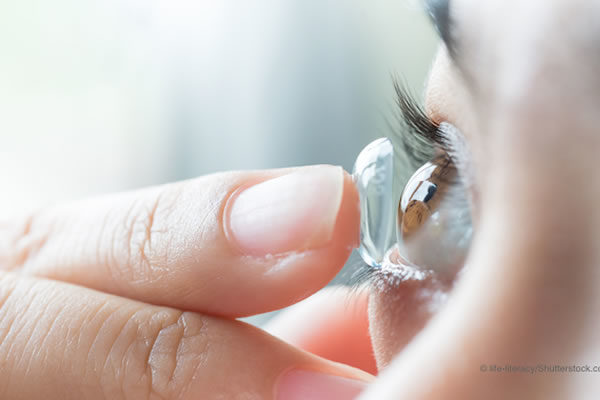WHAT IS MYOPIA?
Myopia is the medical term for short-sightedness, when the eyeball is too long or the lenses that focus the vision are too powerful. The result is that light coming into the eye does not focus directly on the retina, but instead falls in front of it, causing objects in the distance to look blurred. Myopia often worsens as we grow and consequently, the eye grows.
WHY DO PEOPLE DEVELOP MYOPIA?
Research suggests it depends on each person’s genetics as well as their lifestyle and their day-to-day environment. People who spend more time doing tasks at close distance, such as working on computers and reading, seem more likely to suffer from the condition. A lack of time spent outdoors, as well as a family history of myopia are also contributing factors.
WHY IS IT A PROBLEM?
Generally, once you have myopia your prescription gets stronger over time, in particular during childhood as the eye develops. Many people develop myopia later in life, however if a child is myopic, they are at risk of their vision deteriorating much more quickly. Not only does this mean having poor vision, higher levels of myopia – particularly over -6.00DS – are also linked to an increased risk of developing eye diseases such as glaucoma, retinal detachment, macular degeneration and cataract in later life
MYOPIA CONTROL
“Myopia control” is the term used to describe specific treatments to slow the progression of near-sightedness in children.
Myopia control measures typically are prescribed by an optometrist
There are four primary categories of myopia control treatments: atropine eye drops, multifocal contact lenses, multifocal eyeglasses and orthokeratology (ortho-k).
Myopia control is important because it may help reduce the risk of vision-threatening complications associated with high myopia high Myopia later in life — including glaucoma, cataract, retinal detachment and even blindness.
Multifocal contacts are primarily designed to provide clear vision at all distances for people who have refractive errors (near-sightedness, far-sightedness) and also are experiencing the normal age-related loss of near focusing ability called presbyopia.
But multifocal contacts also can help slow the progression of myopia in some children.
Multifocal eyeglasses
Multifocal eyeglass lenses work similarly to multifocal contacts to help wearers with presbyopia see clearly at all distances. They also have been shown to slow the progression of nearsightedness in children.
Orthokeratology (Ortho-k)
Also known as “corneal reshaping lenses”, orthho-K lenses
are specially designed gas permeable lenses
that are worn only at night during sleep. In the morning, the lenses are removed and the temporary correction is good enough so corrective lenses are not needed during the day.
Atropine eye drops
Atropine eye drops commonly are used to reduce the pain associated with certain types of eye inflammation. They also relieve focusing fatigue by dilating the pupil and temporarily limiting the eye’s ability to automatically change focus (a process called accommodation).
The effect atropine has on accommodation may be what accounts for its effectiveness in also reducing the progression of myopia in children. Some studies have shown that atropine is the most effective way of controlling myopia, and that its use can reduce myopia progression by up to 77 percent.
HOW DO THE MYOPIA CONTROL CONTACT LENSES WORK?
Myopia control contact lenses are designed to correct your child’s vision by slowing the process of elongation and enlargement of the eyeball. The aim of treatment is to slow the rate of decline by at least 50%. It cannot completely halt the progression, nor can it improve your child’s vision.
The treatment involves specialised soft multifocal contact lenses which are worn through the day, or specially designed gas permeable lenses (orthokeratology)
which are worn when asleep. Patients get used to them very quickly and their sleep is rarely affected by them. We will advise on exact timings for your child’s individual situation.
IS THIS A TREATMENT FOR LIFE?
The eye does not continue to change shape for your whole life and so by late teens or early adulthood most people will find the myopia naturally stops progressing. At this stage spectacles or traditional contact lenses will become appropriate for your child’s visual correction.
HOW OFTEN WILL MY CHILD NEED TO VISIT?
As with all contact lenses, there will need to be a number of appointments to establish the best initial lenses for your child and to assess their suitability for lens wear.
After your child’s initial appointment, they will have a lens collection appointment at which they will see one of our optometrists who will take all the time they need to ensure they can handle the lenses safely and answer any contact lens questions you or your child have. Your child will return to the practice for a check two weeks later to assess how they have found the lenses. Your child will then be expected to attend for a contact lens check on at least a six monthly basis to monitor their progress with the lenses.
CAN I DO ANYTHING ELSE TO HELP PREVENT MYOPIA PROGRESSION?
- Increase the amount of time your child spends outside each day. The brightness of natural light is thought to limit the rate of progression.
- Take regular breaks from close work e.g. they should looking away from their desk for a minute or so to change focus, or change tasks every 30-60 minutes to alter the focusing demands on their vision.
- Try to limit additional close work (over and above school or work) to two hours per day. This includes reading, hand-held computer games, drawing, homework and computer work.
- There has been a role suggested for vitamin D in the control of myopia and, although there is currently no significant evidence to support this, supplements are also something to consider.





















